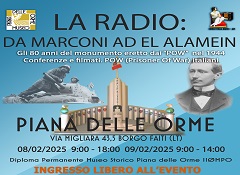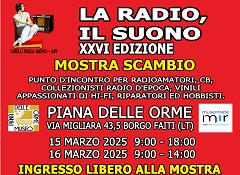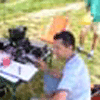23cm Band Studies progressing in CEPT and ITU‑R
Dec 16, 2021 - Spectrum - Barry, G4SJH
Preparatory activities for WRC23 have continued in a number of committees, working groups and workshops in the ITU‑R, CEPT and the European Commission here in Region 1. The developments have been actively supported by the SRLC and the PRC committee chairs with IARU written and verbal contributions. Particular focus continues on the WRC23 AI 9.1b topic on coexistence between the amateur services and radio navigation satellite services (RNSS) in 1240 – 1300 MHz.
During November the CEPT Conference Preparatory Group (CPG) meeting number 4 took place and considered the updates to the CEPT WRC23 Brief on AI9.1b. During this meeting IARU Region 1 took on the role of CEPT co-coordinator for AI9.1b and will continue going forward, sharing the role with France. The CEPT brief will continue to evolve to reflect the studies taking place in ITU‑R WP4C/5A and CEPT SE40 as they reach a stable state.
ITU‑R WP5A also met during November and continued work on the same topic developing the WRC23 Conference Preparatory Meeting Report text (CPM Report) that will summarise the ITU‑R studies required to address the AI9.1b topic at the conference. The meeting started to analyse and consider the study work that continues in WP4C and provided comments regarding the simulation scenarios developed for study. A very early draft ITU‑R Recommendation was proposed which may form the basis for recommending guidance for concerned administrations regarding amateur service coexistence with the RNSS. Work on all these elements will continue into 2022. Click here for the summary report https://www.iaru.org/wp-content/uploads/2021/12/Report-from-WP5A_Nov-2021.pdf
In early December CEPT SE40 met and continued the development of their draft ECC report on this issue. This work is now the furthest advanced and IARU has worked hard to ensure the coexistence simulation scenarios properly reflect realistic scenarios for the amateur and amateur satellite services. Simulation work using the ITU‑R propagation model (P.1546) carried out by France and considering the GALILEO system is stabilising and has provided predictions of the interference area around a transmitting amateur station for a range of power levels and station configurations. These simulations have considered typical home based stations used for terrestrial weak signal operating, satellite uplinking, ATV and EME. Repeater station emissions are considered too for both narrowband and ATV operations.
Propagation prediction models are statistical in their nature and assumptions have to be made about terrain and environment. Assuming sub-urban scenarios, 50% of locations and 50% or 1% of time, the following is a sample of the interfered area predictions from the propagation model for a typical 100W home station using a Yagi beam antenna:
Time % Main Beam distance Side Lobe radius Interfered Area
50% 20km 8km 280 km2
1% 25km 10km 440 km2
100W Home Based Station
IARU is continuing to contribute to the discussions to provide additional context around the results of these simulations by considering the real amateur station density and activity factor for a population of 23cm band stations. Click here for the most recent contribution.
Finally the European Commission convened a joint EC/CEPT WRC23 workshop covering all the WRC23 agenda items. On AI9.1b, IARU took the opportunity to take the floor and underline the importance of the 23cm band for the amateur microwave community and express the need to find compromises in order to reach mutually acceptable conclusions that can allow the continued development of both services. Click here for the report https://www.iaru-r1.org/wp-content/uploads/2021/12/Joint_EC-CEPT_workshop_WRC23_report.pdf
Preparatory activities for WRC23 have continued in a number of committees, working groups and workshops in the ITU‑R, CEPT and the European Commission here in Region 1. The developments have been actively supported by the SRLC and the PRC committee chairs with IARU written and verbal contributions. Particular focus continues on the WRC23 AI 9.1b topic on coexistence between the amateur services and radio navigation satellite services (RNSS) in 1240 – 1300 MHz.
During November the CEPT Conference Preparatory Group (CPG) meeting number 4 took place and considered the updates to the CEPT WRC23 Brief on AI9.1b. During this meeting IARU Region 1 took on the role of CEPT co-coordinator for AI9.1b and will continue going forward, sharing the role with France. The CEPT brief will continue to evolve to reflect the studies taking place in ITU‑R WP4C/5A and CEPT SE40 as they reach a stable state.
ITU‑R WP5A also met during November and continued work on the same topic developing the WRC23 Conference Preparatory Meeting Report text (CPM Report) that will summarise the ITU‑R studies required to address the AI9.1b topic at the conference. The meeting started to analyse and consider the study work that continues in WP4C and provided comments regarding the simulation scenarios developed for study. A very early draft ITU‑R Recommendation was proposed which may form the basis for recommending guidance for concerned administrations regarding amateur service coexistence with the RNSS. Work on all these elements will continue into 2022. Click here for the summary report https://www.iaru.org/wp-content/uploads/2021/12/Report-from-WP5A_Nov-2021.pdf
In early December CEPT SE40 met and continued the development of their draft ECC report on this issue. This work is now the furthest advanced and IARU has worked hard to ensure the coexistence simulation scenarios properly reflect realistic scenarios for the amateur and amateur satellite services. Simulation work using the ITU‑R propagation model (P.1546) carried out by France and considering the GALILEO system is stabilising and has provided predictions of the interference area around a transmitting amateur station for a range of power levels and station configurations. These simulations have considered typical home based stations used for terrestrial weak signal operating, satellite uplinking, ATV and EME. Repeater station emissions are considered too for both narrowband and ATV operations.
Propagation prediction models are statistical in their nature and assumptions have to be made about terrain and environment. Assuming sub-urban scenarios, 50% of locations and 50% or 1% of time, the following is a sample of the interfered area predictions from the propagation model for a typical 100W home station using a Yagi beam antenna:
Time % Main Beam distance Side Lobe radius Interfered Area
50% 20km 8km 280 km2
1% 25km 10km 440 km2
100W Home Based Station
IARU is continuing to contribute to the discussions to provide additional context around the results of these simulations by considering the real amateur station density and activity factor for a population of 23cm band stations. Click here for the most recent contribution.
Finally the European Commission convened a joint EC/CEPT WRC23 workshop covering all the WRC23 agenda items. On AI9.1b, IARU took the opportunity to take the floor and underline the importance of the 23cm band for the amateur microwave community and express the need to find compromises in order to reach mutually acceptable conclusions that can allow the continued development of both services. Click here for the report https://www.iaru-r1.org/wp-content/uploads/2021/12/Joint_EC-CEPT_workshop_WRC23_report.pdf
IK0ZCW Alberto Devitofrancesco Presidente C.I.S.A.R. sezione di Roma IQ0HB
https://www.cisarroma.it - https://www.ik0zcw.it - https://www.qrz.com/db/ik0zcw

CISAR SVXLINK NAZIONALE per info: https://svxlink.cisar.it/
 . . . . . . . . . . .
. . . . . . . . . . . 
SvxLink by SM0SVX rete RedNet per informazioni: http://iw0.red

https://www.cisarroma.it - https://www.ik0zcw.it - https://www.qrz.com/db/ik0zcw

CISAR SVXLINK NAZIONALE per info: https://svxlink.cisar.it/
 . . . . . . . . . . .
. . . . . . . . . . . 
SvxLink by SM0SVX rete RedNet per informazioni: http://iw0.red









